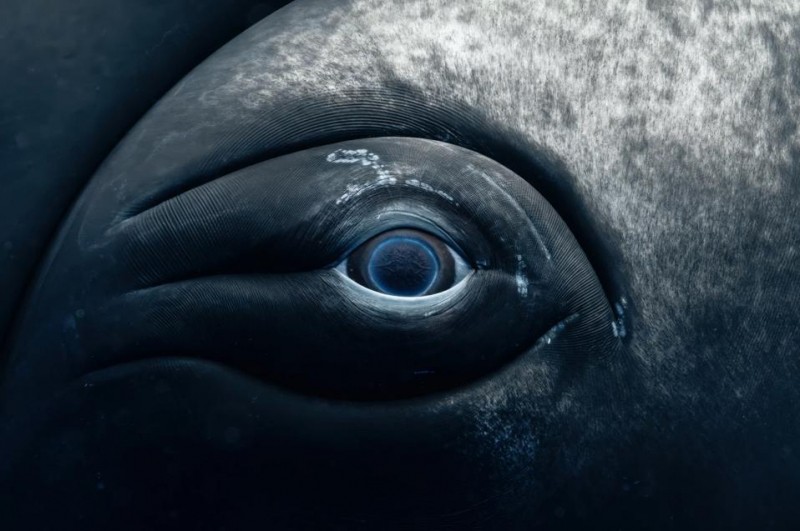The 2025 UN World Oceans Day Photo Competition celebrates the ocean’s beauty and raises awareness about its protection. This year’s theme, “Wonder: Sustaining What Sustains Us,” is reflected in the winning images, which highlight both the awe-inspiring creatures and fragile ecosystems of our oceans.
The competition featured entries from photographers around the world, both professional and amateur, in four categories: Big and Small Underwater Faces, Underwater Seascapes, Above Water Seascapes, and the new Wonder: Sustaining What Sustains Us category, inspired by the theme.
The winning photos showcase an array of breathtaking scenes, from surprising animal encounters to stunning seascapes. These images offer a complex view of our oceans and underscore the importance of preserving them.
One notable image, taken by Rachel Moore in 2024, won 1st place in the Wonder: Sustaining What Sustains Us category. It features a humpback whale named Sweet Girl in Mo’orea, French Polynesia, just days before her tragic death due to a ship strike.
Moore’s heartbreaking story highlights the dangers faced by whales, with 20,000 whales lost each year to ship strikes.
Moore used Sweet Girl’s story to advocate for stricter protections for these majestic creatures, particularly around Tahiti and Mo’orea during whale season.
Book your next adventure with MWR LIFE, where you can experience the wonders of the ocean firsthand while supporting efforts to preserve these breathtaking ecosystems.
World Ocean’s Photo Competition First Place Winners
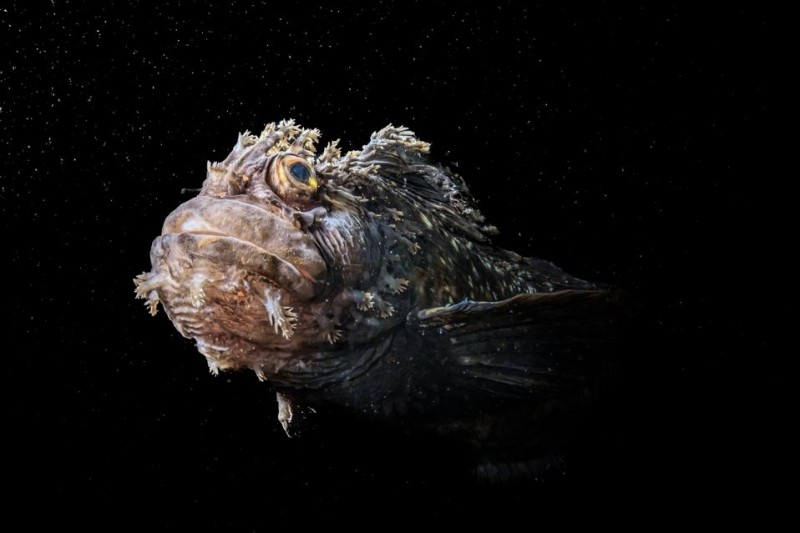
1st Place, Big and Small Underwater Faces Category, Sea of Japan
This stunning photo of a Japanese warbonnet was taken in the Sea of Japan, approximately 50 miles southwest of Vladivostok, Russia.
Andre Nosik, the photographer, explains, “I spotted the ornate fish at a depth of around 30 meters (100 feet) beneath the stern of a shipwreck.” The species appears unafraid of divers. In fact, it seemed to enjoy the attention and even attempted to sit on the dome port of Nosik’s camera.
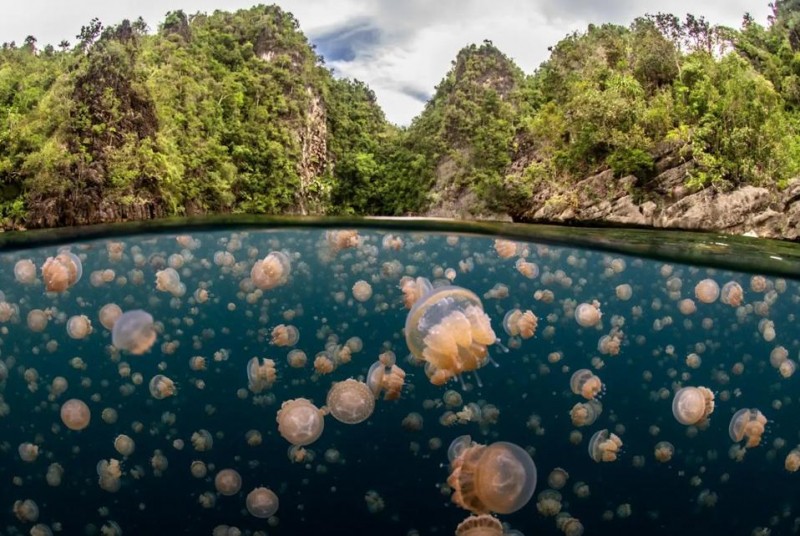
1st Place, Underwater Seascapes Category – Raja Ampat, Indonesia
Dani Escayola shares, “This year, I had the rare chance to visit a jellyfish lake during a live-aboard trip in southern Raja Ampat. Being surrounded by millions of jellyfish, which lost their stinging ability due to the lack of predators, was truly breathtaking.”
A peaceful lake nestled between arid dunes, fed by a gentle stream, is captured from an airplane over a remote stretch of coastline near Shark Bay, Western Australia.
Second Place Winners Of Ocean’s Photo Competition
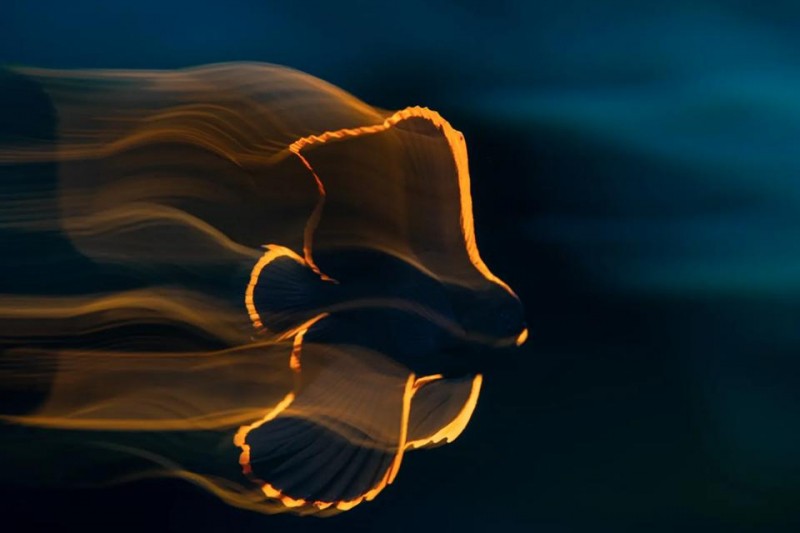
2nd Place, Wonder Sustaining What Sustains Us, Indonesia’s Lembeh Strait.
This juvenile pinnate batfish was photographed with a slow shutter speed, a ‘snooted’ light (to control the light beam for the shot) and deliberate camera panning to create a sense of motion.
Juvenile pinnate batfish are known for their striking black bodies outlined in vibrant orange, a coloration they lose within a few months as they mature. I encountered this restless subject in the tropical waters of Indonesia’s Lembeh Strait.
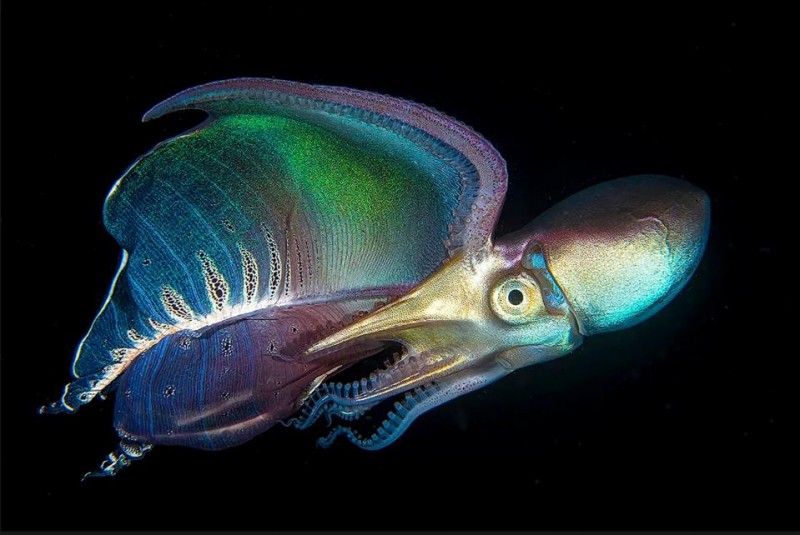
2nd Place, Big and Small Underwater Facess. Anilao, Philippines.
On one of his many blackwater dives in Anilao, Philippines, Giacomo Marchine spotted something moving erratically at a depth of around 65 feet. It was about 10 to 15 centimeters in size, a rare blanket octopus and as he approached, it opened up its beautiful blanket, revealing a multicolored mantle.
“I felt truly privileged to have captured this fascinating deep-sea cephalopod,» Marchione said.” Among the many unique characteristics of this fascinating deep-sea cephalopod, it exhibits some of the most extreme sexual size-dimorphism in nature, with females reaching up to two meters in length, while males typically remain about 2.4 cm.
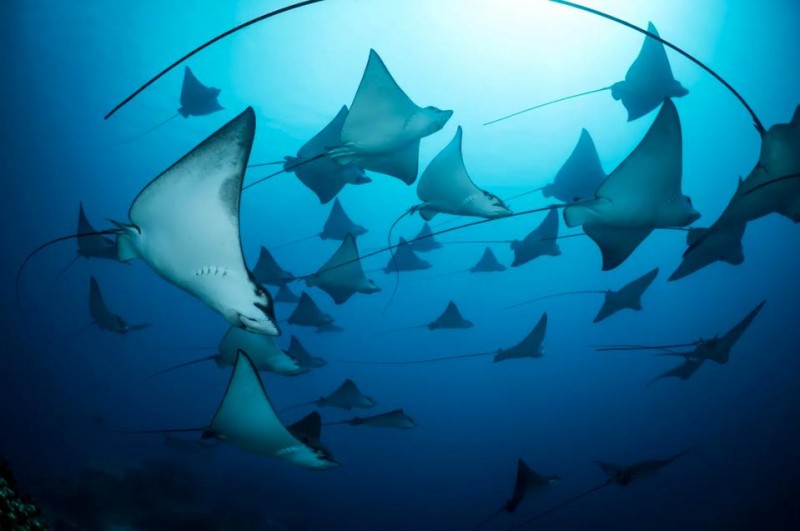
2nd Place, Underwater Seascapes.
This shot captures a school of rays resting at a cleaning station in Mauritius, where strong currents once attracted them regularly. «Some rays grew accustomed to divers, allowing close encounters like this,» Gerald Rambert says. “Sadly, after the severe bleaching that the reefs suffered last year, such gatherings have become rare, and we may not witness this again at the same spot.”
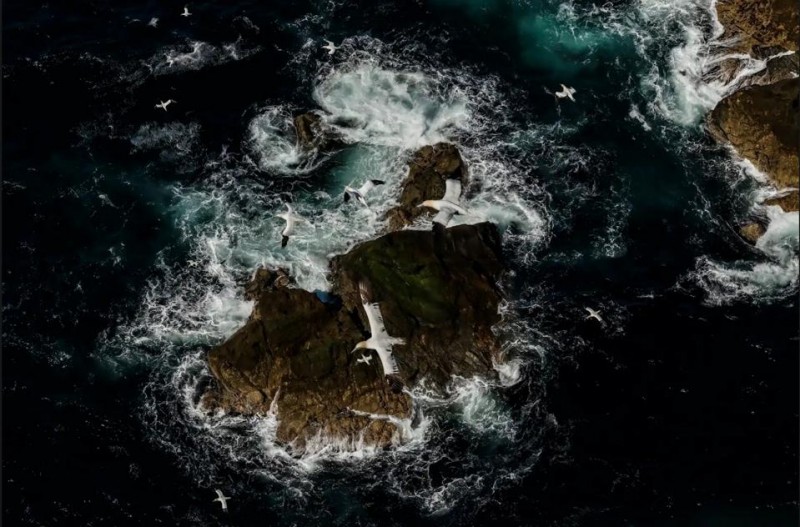
2nd Place, Above Water Seascapes category. Hermaness National Nature Reserve, Scotland.
Northern gannets soar above the dramatic cliffs of Scotland’s Hermaness National Nature Reserve, their sleek white bodies and black-tipped wings slicing through the Shetland winds. These seabirds, the largest in the North Atlantic, are renowned for their striking plunge-dives, reaching speeds up to 60 miles per hour as they hunt for fish beneath the waves.
The cliffs of Hermaness provide ideal nesting sites, with updrafts aiding their take-off and landing. Each spring, thousands return to this rugged coastline, forming one of the U.K.’s most significant gannet colonies.
A Shark Sanctuary And Other Photo Competition Winners
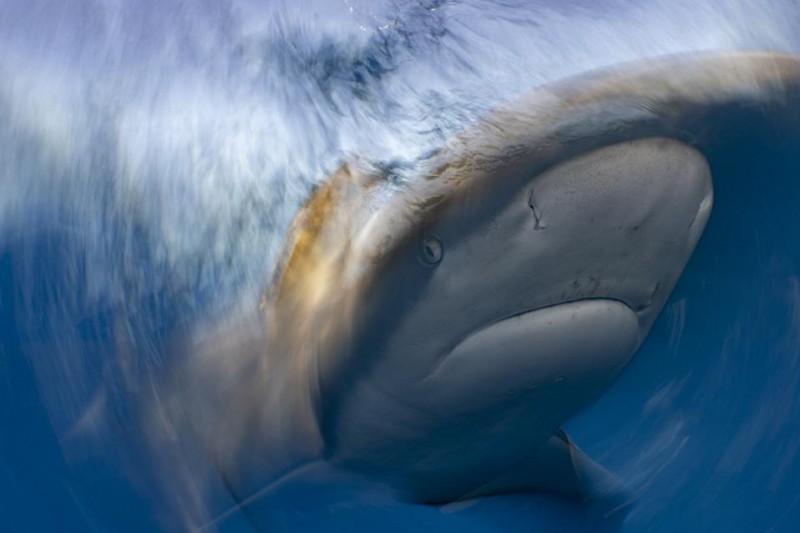
3rd Place, Wonder Sustaining What Sustains Us category. Jardines de la Reina, Cuba.
Shot in Cuba’s Jardines de la Reina, a protected shark sanctuary, this image captures a Caribbean reef shark weaving through a group of silky sharks near the surface. Using a slow shutter and strobes as the shark pivoted sharply, the motion blurred into a wave-like arc across its head, lit by the golden hues of sunset.
The abundance and behavior of sharks here is a living symbol of what protected oceans can look like.
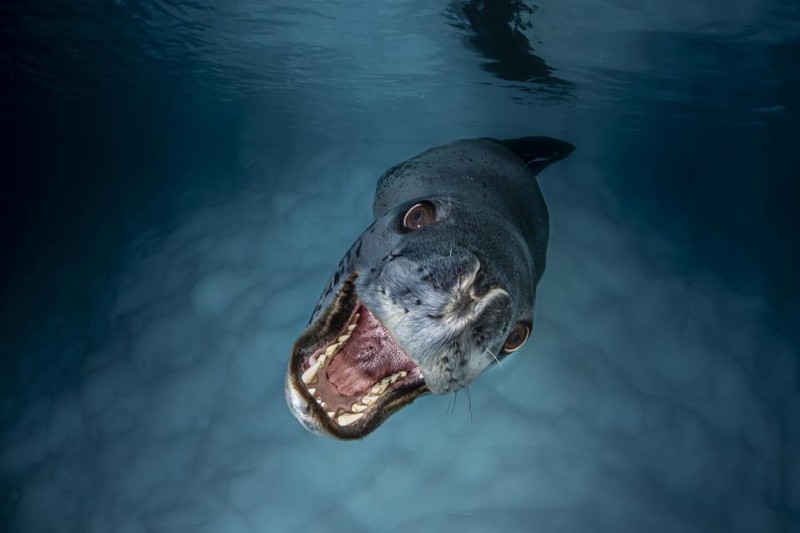
3rd place, Big and Small Underwater Faces category, Antarctic Peninsula.
Trips to the Antarctic Peninsula always yield amazing encounters with leopard seals for Lars Von Ritter. “Boldly approaching me and baring his teeth, this individual was keen to point out that this part of Antarctica was his territory,» he said. «The picture was shot at dusk, resulting in the rather moody atmosphere.”
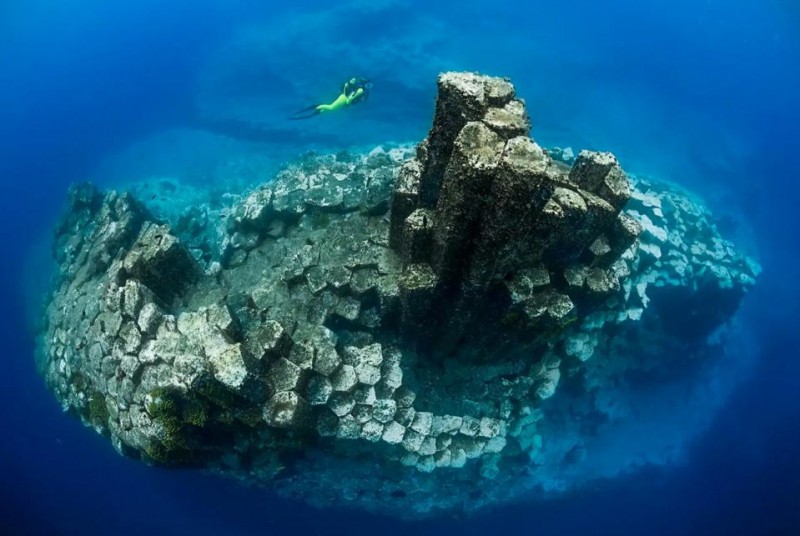
3rd Place, Underwater Seascapes category. “La Rapadura,” northern coast of Tenerife, Canary Islands.
“La Rapadura” is a natural hidden treasure on the northern coast of Tenerife in the Spanish territory of the Canary Islands. Only discovered in 1996, it is one of the most astonishing underwater landscapes in the world, consistently ranking among the planet’s best dive sites.
These towering columns of basalt are the result of volcanic processes that occurred between 500,000 and a million years ago. The formation was created when a basaltic lava flow reached the ocean where, upon cooling and solidifying, it contracted, creating natural structures often compared to the pipes of church organs.
Located in a region where marine life has been impacted by once-common illegal fishing practices, this stunning natural monument has both geological and ecological value, and scientists and underwater photographers are advocating for its protection.
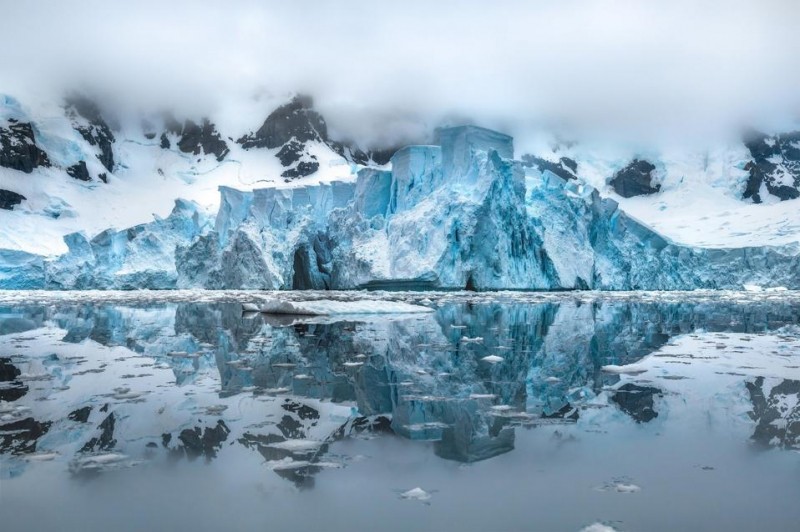
Discover Paradise Harbour – A Hidden Gem of the Antarctic Peninsula
Andrey Nosik calls Paradise Harbour one of the most beautiful spots on the Antarctic Peninsula. During his visit, the sea was incredibly calm, creating a perfect reflection of the Suárez Glacier (also known as Petzval Glacier) in the water. It’s an unforgettable sight!
For a unique getaway, consider booking your vacation at MWR LIFE:3rd Place, Above Water Seascapes, located in Paradise Harbour. Experience the breathtaking beauty of this pristine destination.
Explore the 2025 UN Photo Competition Winners
View the winners and finalists of the 2025 UN Photo Competition for World Oceans Day in the virtual gallery. Relive the stunning images from this year and past editions.
Book your trip today and witness the magnificence of Paradise Harbour!
